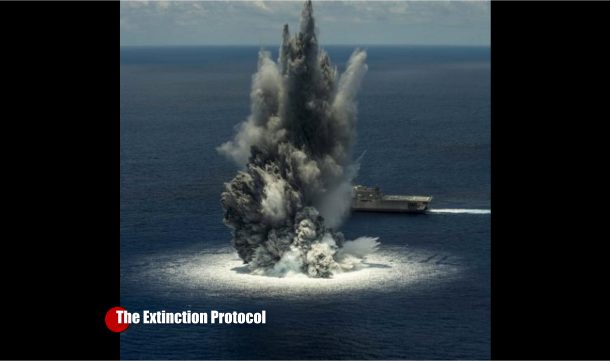Skip to main content
‘Earthquake’ reported off the Florida coast may have been a Navy test

July 2016 – FLORIDA – Remember all that social media buzz over the weekend about an earthquake off the coast of Daytona Beach? Never mind. It appears the “earthquake” detected on Saturday by seismographs as far away as Venezuela and across the United States and Caribbean was triggered by a man made explosion designed to test the seaworthiness of a new U.S. Navy vessel.
A similar 3.7 magnitude “earthquake” was reported by the U.S. Geological Survey on June 10, 156 nautical miles east-northeast of Ormond-by-the-Sea. That was the same day the Navy reported conducting a shock trial on the USS Jackson, headquartered at Mayport for testing. Shock trials test a ship’s ability to withstand the effects of underwater explosions and remain seaworthy. On Saturday, the Geological Survey again reported a 3.7 magnitude “earthquake” around 4 p.m. about 168 nautical miles east-northeast of Daytona Beach Shores.
The Navy had notified the National Oceanic and Atmospheric Administration’s National Marine Fisheries Service that another shock trial was going to be conducted between July 16 and July 20, depending on the weather. Asked about the reported earthquake on Monday, Dale Eng, a public information officer for the Navy’s Sea Systems Command in Washington, said the Navy is working on a statement it expects to release this week.
Seismographs as far away as Minnesota, Texas and Oklahoma, as well as along the coast of Florida, Georgia and North Carolina, registered the event on Saturday, said Bruce Presgrave, a geophysicist and shift supervisor at the Geological Survey’s National Earthquake Information Center in California. Upon seeing the photo Monday of the June 10 shock trail on the News-Journal’s website Presgrave said, “That’s a smoking gun, isn’t it?” Presgrave planned to contact the Navy to learn more about the charges used in the shock trials as part of the agency’s ongoing investigation.
A large underwater explosion “would almost certainly be detected as an earthquake,” he said. Sound travels particularly well in a layer of ocean water known as the SOFAR channel, short for Sound Fixing and Ranging Channel, he said, adding that it “lets sound waves travel a long way away, a lot farther than we would expect.” Because the shock trials happen underwater, the SOFAR channel would be a “very good amplifier,” producing the strong signals seen along the coast on Saturday, Presgrave said. “Even at the sea floor, they would help put a good bit of energy into the ground.” The detection inland would indicate it’s “a pretty big explosion.”
A permit from the Fisheries Service for Navy maneuvers between 2013 and 2018 stated explosions to conduct shock trials on vessels east of Jacksonville could include a 10,000-pound charge and a 40,000-pound charge. The USS Jackson, commissioned last December, is one of the Navy’s new Independence class of littoral combat ships, which will conduct anti-submarine, surface and mine countermeasure operations around the globe, the Navy has reported. They’re “designed to defeat threats in coastal waters where increasingly capable submarines, mines and swarming small craft operate.” A statement from Jackson’s manufacturer, Austal USA, on July 4 said two shock trials had taken place and one other was planned. The company warned its investors that additional modifications were determined necessary after the initial shock trials, requiring a “downward adjustment” to the company’s planned revenue. –News Journal








Comments
Post a Comment